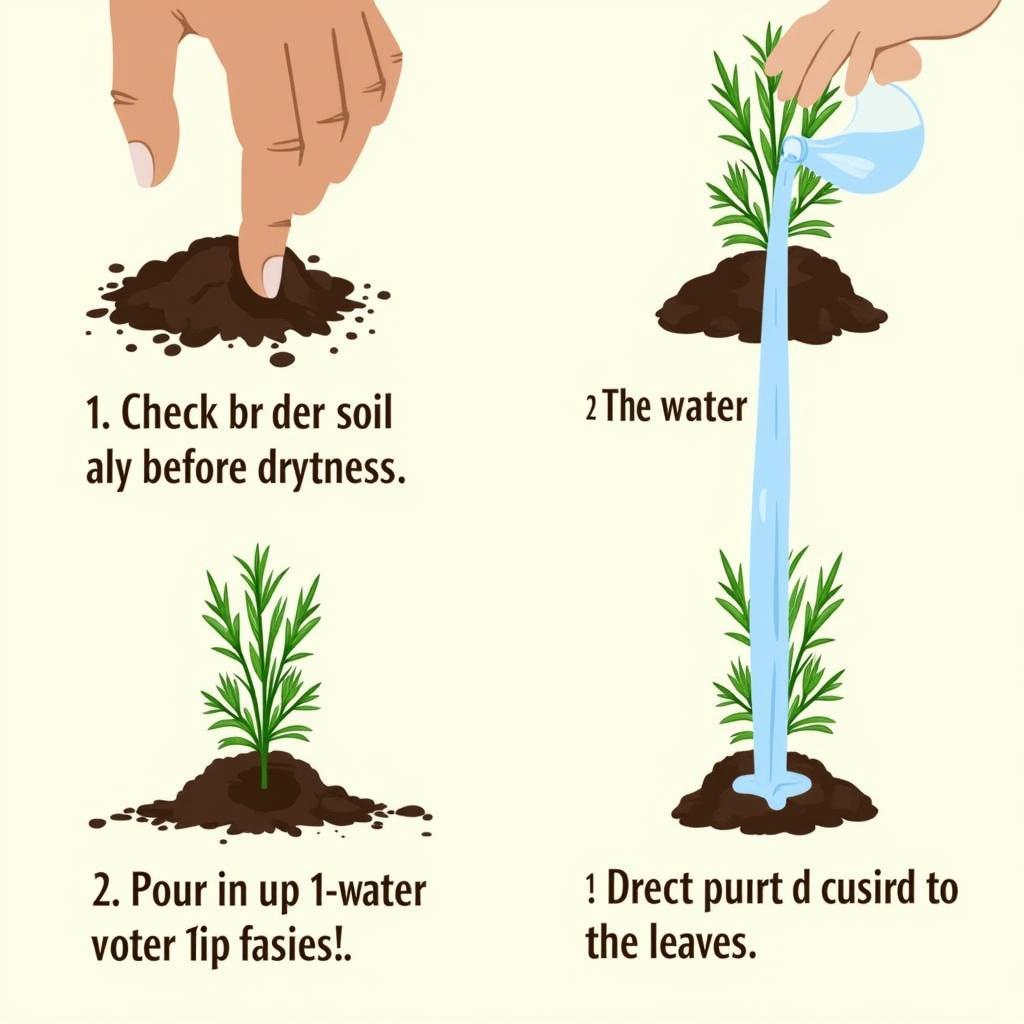Rosemary, with its fragrant needles and versatile uses, is a delightful addition to any garden or kitchen. Whether you’re a seasoned gardener or just starting out, understanding how to take care of rosemary properly will ensure a thriving plant and a bountiful supply of this aromatic herb. This guide will cover everything you need to know, from planting to pruning and everything in between.
Sunlight and Soil: The Foundations of Healthy Rosemary
Rosemary thrives in warm, sunny locations. Ideally, your rosemary plant should receive at least six hours of direct sunlight per day. In shadier conditions, rosemary can become leggy and susceptible to diseases. The soil is equally crucial. Rosemary prefers well-drained, slightly alkaline soil. Heavy, clay-like soil can lead to root rot, so amending the soil with sand or perlite is beneficial. Avoid overwatering, as rosemary is drought-tolerant once established.
Watering and Feeding: Less is More
Overwatering is a common mistake when caring for rosemary. Allow the soil to dry out slightly between waterings. Stick your finger about an inch into the soil; if it feels dry, it’s time to water. During the growing season (spring and summer), rosemary benefits from a balanced liquid fertilizer every few weeks. However, avoid over-fertilizing, as this can lead to lush growth but fewer fragrant oils.
 Watering Rosemary Correctly
Watering Rosemary Correctly
Pruning Rosemary: Encouraging Growth and Shape
Pruning rosemary not only helps maintain its shape but also encourages bushier growth and increased yields. The best time to prune rosemary is after it has finished flowering, typically in late spring or early summer. Use sharp pruning shears to remove any dead, damaged, or diseased branches. You can also trim back the plant by about one-third to encourage new growth.
How to Prune Rosemary for Different Purposes
- For culinary use: Regularly harvest sprigs of rosemary throughout the growing season. This encourages new growth and keeps the plant productive.
- For shaping: Prune the plant into a desired shape, such as a hedge or topiary.
- For rejuvenation: Older, woody rosemary plants can benefit from more severe pruning to remove old growth and stimulate new shoots.
 Pruning Rosemary for Growth
Pruning Rosemary for Growth
Protecting Rosemary from Pests and Diseases
Rosemary is relatively pest-free, but it can occasionally be affected by aphids, spider mites, or powdery mildew. Regularly inspect your plants for signs of pests or diseases. If you notice any issues, treat them promptly with insecticidal soap or a suitable fungicide. Ensuring good air circulation around the plant can also help prevent disease.
Winter Care for Rosemary: Keeping it Alive Through the Cold
Rosemary is a hardy herb, but it can be sensitive to frost. In colder climates, it’s best to grow rosemary in containers that can be brought indoors during the winter months. Alternatively, you can protect outdoor plants by covering them with burlap or a frost blanket. Reduce watering during the winter and avoid fertilizing.
Conclusion: Enjoy Your Thriving Rosemary
Taking care of rosemary is surprisingly straightforward. By providing adequate sunlight, well-drained soil, and minimal watering, you can ensure a healthy and productive plant. Regular pruning will encourage growth and maintain its shape. Remember to protect your rosemary from frost during the winter months, and you’ll be rewarded with a fragrant and flavorful herb for years to come.
FAQs
- How often should I water my rosemary plant?
- When is the best time to prune rosemary?
- Can I grow rosemary indoors?
- What are the common pests and diseases that affect rosemary?
- How can I protect my rosemary plant from frost?
- What kind of soil is best for rosemary?
- How can I propagate rosemary?
Rosemary Care Scenarios
- Yellowing leaves: This could indicate overwatering or nutrient deficiency.
- Leggy growth: The plant may not be receiving enough sunlight.
- Drooping leaves: This could be a sign of underwatering or root rot.
Further Reading
For more information on herb gardening, check out our articles on:
- Growing Basil
- Growing Thyme
- Growing Oregano
When you need support, please contact WhatsApp: +1(641)206-8880, Email: [email protected] Or visit: 276 Reock St, City of Orange, NJ 07050, United States. We have a 24/7 customer service team.


